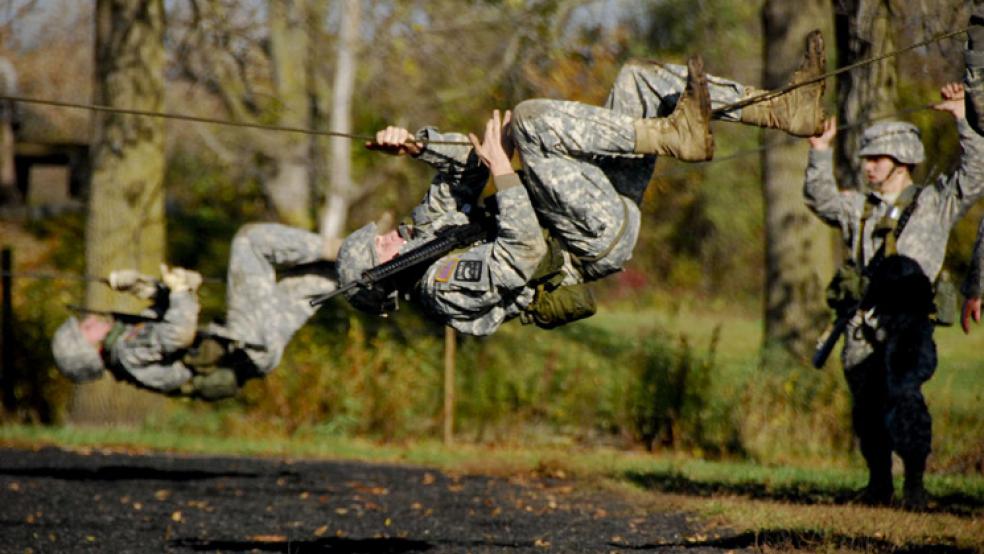Some of the Army’s ROTC programs may not be delivering enough ROI.
The Army announced last month it would close its ROTC departments at 13 college campuses over a period of two years while boosting funding to others.
So how does the Army determine what constitutes an acceptable "return on investment" for an Army ROTC, or reserve officer training corps, program? The answer is the number of officers each program graduates each year. About 33,000 students are enrolled in ROTC programs nationwide. Undergrads can enroll in ROTC as freshmen, sophomores or juniors and have their second lieutenant's commission by the time they graduate. Some cadets pay their own way through college while others get Army scholarships.
Related: Vets’ Programs on the Chopping Block as DOD Cuts Back
Whether it pays for a cadet's schooling or not, what matters most to the Army is that it has enough "entry-level officers" ready to go onto active duty each year, and ROTC supplies a substantial portion of that number. If a particular school isn't producing enough second lieutenants, the Army has to reevaluate that program's worth, and decide if the money would be better spent elsewhere. According to the Army, the 13 schools affected by what it's calling a "realignment" weren't graduating enough new officers.
BATTLING SHIFTING DEMOGRAPHICS
Notably, more than half of these Army ROTC closings are happening at schools in the South. Tennessee alone is seeing programs at three of its colleges shut down. You might think conservative-leaning southern states would be the ideal place to recruit future officers, but the Army thinks a better bet nowadays is urban areas, and it has the data to back up that bet.
The percentage of active duty officers who identify themselves as minorities has climbed from 10.5 percent in 1995 to 23 percent in 2011, according to the Army’s own demographics report. "It makes sense that we would move toward ... where we think we have a recruiting population to go after,” Major General Geoffrey Smith of the Army Cadet Command recently told The New York Times. He added: “The demographics of the country have clearly shifted."
There's also the issue of fitness. It's no secret that obesity is a problem in the South. The classic image of the fit-and-fiddle country boy who can run circles around his city counterpart doesn't necessarily hold up anymore.
Related: How a New Army of Robots Could Cut the Defense Budget
So where will the Army be focusing its new-and-improved officer recruiting efforts in particular? Potentially in places like New York, Chicago and Los Angeles.
"These closures are necessary changes that allow for more efficient use of available resources within the command," the Army said in its statement announcing the closings.
You can't run a military without money. Historically, budgeting and financing have been as important to fighting a battle or winning a war as knowing the terrain you're going to engage the enemy on. In the Army's battle to win new recruits, the terrain has shifted, along with the strategy. It was inevitable there would be some casualties.
Top Reads from The Fiscal Times:





